
Walter de Maria Lightning Field 1977
This talk for Norfolk Contemporary Art Society in Norwich, Wednesday 2nd October, 2019, is in essence a much edited amalgam of two of my essays in Art and its Dark Side: the eight rivers of art.
Grandeur versus the Sublime
I met a traveller from an antique land
Who said: “Two vast and trunkless legs of stone
Stand in the desert. Near them on the sand,
Half sunk, a shattered visage lies, whose frown,
And wrinkled lip, and sneer of cold command,
Tell that its sculptor well those passions read
Which yet survive, stamped on these lifeless things,
The hand that mocked them, and the heart that fed.
And on the pedestal these words appear:
‘My name is Ozymandias, King of Kings:
Look upon my works, ye Mighty, and despair!’
Nothing besides remains. Round the decay
Of that colossal wreck, boundless and bare
The lone and level sands stretch far away.”
xxxxxxxx(Percy Bysshe Shelley, Ozymandias)
During the nineties I wrote a series of essays Art and its Dark Side – The Eight Rivers of Art – creative concerns which have the abiding power to preoccupy artists and writers, and which have always had currency in our cultural life. The essays are online and have often been added to and modified, since the internet allows such an unfinished state to continue. After an introduction, the series divides into two four-essay parts:
Part 1: “Beauty and the Sublime”
1: The Picture within the Picture
2: Quietism: the “vacancy” of Formalism
3: Grandeur versus the Sublime
4: Non-Finito or the art of incompletion
Part 2: “Ugliness and the Abject”
1: Immoralism
2: Grotesque: Ancient and Modern
4: Caprice
These essays on my blog anthonyhowelljournal.com (look in the essays index for Art and its Dark Side Introduction) were and are an attempt to chart the extensive geography of pluralism. I’m concerned with affinities rather than derivations; and, in preference to chronological contiguity, I offer analogies and comparisons across time. The attempt is one which seeks to disassociate itself from the sort of history that cites key works and their dates and constructs from these une histoire des événements, a narrative of events. If I am engaged in history in any way whatsoever, it is more with that notion of the longue durée first articulated by Fernand Braudel; a sense that in large matters, things change slowly. The essays call into question twentieth century terms, which were taken up with the notion of progress and development in time. Modernism, and then post-modernism are both time terms. Pointillism on the other hand refers to a specific artistic way of doing. I find it amusing that the poet John Ashbery was referred to as a modernist, and then, when the trend came in to refer to things as post-modern, he was called a post-modernist. So what is offered in these essays are eight rivers of art, rivers which seem to have run throughout history.
Of course rivers can merge, and to explore this notion, let us take a term such as the sublime and seek to explore it by considering two of my rivers – grandeur and non-finito, and how the sublime might be considered an amalgam of these terms. Since I initially engaged with the subjects, twenty or so years ago, I feel now that a lot more could be said about the terms in relation to music; from Beethoven’s Fifth to Schubert’s Unfinished Symphony. From lavish film music accompanying epics to Thelonious Monk improvising. I hope to get round to addressing this omission. Here I address my subject largely through visual art and poetry, with a bit of architecture and film thrown in.
Stone Stele erected to the Akkadian King Narem-sin from Mesopotamia c. 2250 BCE
Some four thousand years ago, in Mesopotamia, a stone stele was erected to the Akkadian king Naram-Sin to commemorate a victory The stele is of particular interest because on it the king is depicted as being twice the size of anyone else. He took the title ‘king of the four quarters’, which suggests dominion over the whole world, and he favoured the use of the determinative hitherto reserved for the writing of divine names. Neither the defeated king nor his own troops can approach his stature. He stands on the horizon, while otherwise only some spear-tips and a single helmet rise above it, and he shares this empty space with a tall mountain and with the stars. This is one of the very first times that scale is used to denote mightiness. This visual solution coincides with the adoption of an elevated tone where verbal reference to his majesty was concerned.
Two issues are at stake here: what you describe and how you describe it.
These are frequently confounded with each other, though they are in reality extremely different. The former regards the understanding; the latter belongs to the passions. The one describes a thing as it is; the other describes it as it is felt…
(Edmund Burke, A Philosophical Enquiry…. ‘How words influence the passions’, p. 159).
In the quarry at Baalbek, there is a rectangular cube of marble so massive that it could never be lifted out of that quarry – so that is where it remains
…we must keep from going very near the pyramids just as much as we keep from going too far from them, in order to get the full emotional effect from their size. For if we are too far away, the parts to be apprehended (the stones lying one over the other) are only obscurely represented, and the representation of them produces no effect upon the aesthetical judgement of the subject. But if we are very near, the eye requires some time to complete the apprehension of the tiers from the bottom to the apex, and then the first tiers are always partly forgotten before the imagination has taken in the last, and so the comprehension of them is never complete.
(Immanuel Kant, Critique of Judgement, p. 115)
In antiquity, in the treatise On the Sublime by Longinus, we find elevation clearly associated with an elevated tone, just as we do some two-thousand years earlier, in the time of Naram-Sin. Yet more often than not Longinus eschews Roman “aggrandisement” and chooses instead to cite a passage from his compatriot Homer’s Iliad as a truly resonant example of the grand manner; for instance, how Hector rushed at the Greek fleet:
“And fell upon it like a wave high raised that then doth stoop
Out from the clouds, grows as it stoops with storms. Then down doth come
And cuff a ship, when all her sides are hid in brackish foam,
Strong gales still raging in her sails, her sailors’ minds dismayed,
Death being but little from their lives…”
xxxxxxxxxx(The Iliad, Chapman’s 1611 translation)
But grandeur, may simply be aggrandisement. As in a life-size portrait of Cardinal Richelieu. The new stadium at White Hart Lane is certainly grand. In no way is it sublime. How does the sublime operate? According to Longinus:
Sublimity is a kind of eminence or excellence of discourse. It is the source of distinction of the very greatest poets and prose writers and the means by which they have given eternal life to their own fame. For grandeur produces ecstasy rather than persuasion in the hearer; and the combination of wonder and astonishment always proves superior to the merely persuasive and pleasant. This is because persuasion is on the whole something we can control, whereas amazement and wonder exert invincible power and force and get the better of every hearer.
(Classical Literary Criticism, page 143)
Michelangelo Awakening Slave begun after 1505
There is a generative aspect to the sublime, a sublimity “of” – a sublimity of sculpture, of language, of vista etc. It could even be a sublimity of pace:
For the Italian fascist passing directly from the athletic record to absolute war, the intoxication of the speed-body is total; it’s Mussolini’s ‘Poetry of the bomber’. For Marinetti, after d’Annunzio, the ‘warrior-dandy’ is the ‘only able subject, surviving and savouring in battle the power of the human body’s metallic dream’.
(Paul Virilio, Speed and Politics, p. 116-7)
Arc de Vallon in the gorge of the Ardeche, France
There can be a sublimity of natural phenomena, as with the Arc du Vallon or the Durdle Door or any magnificent “view”.
Chauvet cave, S W France painted c. 15000BC
And since the Arc du Vallon, is extremely close to the Chauvet Cave, where we find the unfinished masterpieces of our cave ancestors (who perhaps drew in charcoal with both hands in the dark), one senses that they too were astounded by the sublime of this natural arch of rock, and chose to dwell close to it, although it is true that caves may be found where you find arches. Explorers often encounter the natural sublime. Francis Spufford adumbrates some of the sublime’s myriad varieties in I May Be Some Time, an account of Edwardian polar exploration:
In the first half of the eighteenth century, the sublime meant a rush of noble emotion; you felt it when a play, or a poem, or a human action, displayed qualities so admirable that it became irrelevant to ask whether whatever-it-was had been well-expressed, or neatly bundled into a couplet of verse. From the 1750s to the 1790s, partly because of Burke, it more often meant a sensation of wonder mixed with fear, a pleasurable encounter with forbidding landscape or the darker passions. Among the Romantic poets, sublimity labelled the most elevated moments in the transactions between Nature and the human soul; while for the German philosopher Kant… human reason generated the sublime as it reached for absolute ideas beyond the grasp of the senses. Yet even these disgraceful summaries of complicated positions only hint at the wealth of different sublimes. Over the period, besides the ‘natural sublime’, there were a negative, a positive, a mathematical, an ethical, a psychological, a religious, an egotistical, a rhetorical, an aesthetic, and a dynamic sublime – to name only some…
(Francis Spufford, I May Be Some Time, p.)
But Longinus urges caution when the sublime is too much associated with the emotions:
Some people often get carried away, like drunkards, into emotions unconnected with the subject, which are simply their own pedantic invention. The audience feels nothing, so that they inevitably make an exhibition of themselves, parading their ecstasies before an audience which does not share them.
(Longinus, Classical Literary Criticism, page 146)
Consider the grandeur of Anselm Kiefer’s Fire in the Attic woodcut installation in the massive German Pavilion of the Venice Biennale, back in the last century. The four walls of the large hall were covered with the woodcut of an even larger hall!
Now Grandeur, as considered in my essay on the subject, is not necessarily sublime. Here is Statius, describing the grandeur of a feast thrown for his guests by the Emperor Domitian, to which he has actually been invited:
The Royal feast of Sidonian Dido is sung
By him who brought great Aeneas
By the meadows of the Laurentine,
The banquet of Alcinous is recalled
In deathless verse by him who told the return
Over the seas of Ulysses, the wind-weathered one,
But I – to whom Caesar has only just now,
For the first time ever, afforded the right
To partake of the bliss of his holy banquet
In my own lifetime, and rise still alive,
From an Emperor’s table – how shall I sing
My resounding thanks, for the supper, I mean,
How tune my lyre to the theme of it? Nay,
Though my brow be bound and blessed
With the fragrant bays of Smyrna and of Mantua,
Not even so shall my strains be enough.
I seem to be feasting right in the heart of
Heaven with Jove. From the Trojan’s hand,
And not in mime, I receive immortal wine.
Eternal time! How barren now the years
Before this! Here am I announced! My days begin.
This is the threshold of my life.
Ruler of the conquered planet, Father
Hope of mankind, love-object
Of the gods, dost thou appear to me
As I recline here? Is is really thou?
And dost thou suffer me to see thy face,
Thy face, which is actually there, above the wine…
xxxxxxx(Statius, Silvae IV, II – version by A.H.)
The language attempts to render this event sublime, but bearing in mind that on occasion guests were ushered out of the banqueting hall to their execution, Statius has good reason to flatter as much as he can, but what he is actually with a deft irony describing remains grandeur and no more. So there is a satirical side to grandeur Indeed the material of grandeur can be turned against the totalitarian sublime. Anselm Keifer and Hans Haacke are not the first artists to use grandeur itself to comment on the overweening attitude to be detected in that magnificence associated with conquerors.
Paulo Veronese The Family of Darius before Alexander 1570 [236cm x 475cm]
Paulo Veronese’s great painting The Family of Darius before Alexander utilises all the techniques of grandeur. The canvas is an extensive panorama – similar to a cinemascope screen. The work has a low viewing angle, the line of the edge of the terrace where the major figures of the subject are grouped at a shallow height above the lower edge of the painting. This implies that our eyes are on a level with the knees of the principle characters. The scene before us shows the wife of Darius, who Alexander has defeated at the battle of Issus, kneeling in subjugation before their conqueror. We therefore share her view of him, as if we were kneeling beside her, as are her three daughters. The elevation of this terrace where the mighty are gathered is further emphasised by the fact that the courtyard beyond is obviously some four feet below it, as we are, for only the helmeted head of a guard standing nearby, on the floor of this courtyard, can be seen above the terrace edge. Underlings, henchman and horses in the background are practically transparent, insubstantial, unfinished. Clutching the stone globe terminating the parapet of the terrace a monkey glances down at the entourage of the suppliants – which includes a dwarf and some kneeling slaves with lap-dogs in their arms. It constitutes a wry comment on the entire notion of superiority, since a fine chain of implications links the monkey to Alexander. The treatment of this subject is far from unambiguous. However, when Victor Hugo’s misshapen bell-ringer of Notre Dame leaps on the bells, in Notre Dame de Paris (1831), we experience one of the grandest passages ever put down in words, a grandeur that for once amounts to the sublime:
All of a sudden, the frenzy of the bell seized upon him; his look became extraordinary; he lay in wait for the great bell as it passed, as a spider lies in wait for a fly, and flung himself abruptly upon it, with might and main. Then, suspended above the abyss, borne to and fro by the formidable swinging of the bell, he seized the brazen monster by the ear‑laps, pressed it between both knees, spurred it on with his heels, and redoubled the fury of the peal with the whole shock and weight of his body. Meanwhile, the tower trembled; he shrieked and gnashed his teeth, his red hair rose erect, his breast heaving like a bellows, his eye flashed flames, the monstrous bell neighed, panting, beneath him; and then it was no longer the great bell of Notre‑ Dame nor Quasimodo: it was a dream, a whirlwind, a tempest, dizziness mounted astride of noise; a spirit clinging to a flying crupper, a strange centaur, half man, half bell; a sort of horrible Astolphus, borne away upon a prodigious hippogriff of living bronze.
Elevation of tone may sweep us away in some opera by Wagner, or captivate us with its resonance – as in Wordsworth’s ode – Intimations of Immortality from Recollections of Early Childhood:
“What though the radiance that was once so bright
Be now for ever taken from my sight,
Though nothing can bring back the hour
Of splendour in the grass, of glory in the flower…”
(Wordsworth, Poetical Works, p. 460-2)
But note that the sublimity that greatness aspires to, may actually be lost if too much grandeur is applied:
…too great a length in buildings destroys the purpose of greatness which it was intended to promote; the perspective will lessen it in height as it gains in length; and will bring it at last to a point; turning the whole figure into a sort of triangle, the poorest in its effect of almost any figure, that can be presented to the eye. I have ever observed, that colonnades and avenues of trees of a moderate length, were without comparison far grander, than when they were suffered to run to immense distances…”
(Edmund Burke, A Philosophical Enquiry… p. 70)
He goes on:
A true artist should put a generous deceit on the spectators, and effect the noblest designs by easy methods. Designs that are vast only by their dimensions, are always the sign of a common and low imagination. No work of art can be great, but as it deceives; to be otherwise is the prerogative of nature only.
(Ibid)
That seems very true of Richelieu’s portrait.
Cardinal Richelieu by Philippe de Champaigne (1602-1674)
Our eyes at the level of the hem of his robe, his face foreshortened like the dead Christ’s in the famous Mantegna, but in this case the head is so distant it seems almost tiny. For this is how Richelieu appears, the ear attached to a very distant peak.
It’s worth reading Ann Radcliffe’s The Mysteries of Udolpho, first published in 1794. Mrs Radcliffe had a talent for creating rebels in the grand manner, sublime criminals such as the monk Schedoni in The Italian, which she brought out, by popular demand, only three years later:
His figure was striking… it was tall, and, though extremely thin, his limbs were large and uncouth, and as he walked along, wrapt in the black garments of his order, there was something terrible in its air; something almost superhuman. His cowl, too, as it threw a shade over the livid paleness of his face, increased its severe character, and gave an effect to his large melancholy eye, which approached to horror.
(Ann Radcliffe, The Italian, or the Confessional of the Black Penitents, p.)
Giovani Panini Imaginary Museum 1758
On the whole, in the eighteenth century, grandeur became baroque, and an elevated tone gets turned into neo-classical cliché. It was left to an American to rescue grandeur and ensure its sublime authenticity. Walt Whitman maintains an elevated tone which retains the grittiness Longinus called attention to in the Iliad.
“I sing the body electric,
The armies of those I love engirth me and I engirth them,
They will not let me off till I go with them, respond to them,
And discorrupt them, and charge them full with the charge of the soul.
xxxx (‘Children of Adam’ – Walt Whitman, Leaves of Grass, p. 81)
or, Whitman can approach the sublime by building up to it through a steady accumulation of phrases:
“Out of the cradle endlessly rocking,
Out of the mocking bird’s throat, the musical shuttle,
Out of the nine-month midnight,
Over the sterile sands and the fields beyond, where the child leaving his bed wander’d alone, bareheaded, barefoot,
Down from the shower’d halo,
Up from the mystic play of shadows twining and twisting as if they were alive…”
(‘Sea-Drift’ – Walt Whitman, Leaves of Grass, p.196)
Then Harte Crane has some poems which aptly convey the power of authentic grandeur.
Take this Sea, whose diapason knells
On scrolls of silver snowy sentences,
The sceptred terror of whose sessions rends
As her demeanors motion well or ill,
All but the pieties of lovers’ hands.
And onward, as bells off San Salvador
Salute the crocus lustres of the stars,
In these poinsettia meadows of her tides, –
Adagios of islands, O my Prodigal,
Complete the dark confessions her veins spell…”
(‘Voyages II’ – Harte Crane, The Complete Poems… p. 36)
Fernando Botero Broadgate Venus in Broadgate near Liverpool Street Station, London.
And then there is modernist grandeur operating in Wallace Stevens:
“Call the roller of big cigars,
The muscular one, and bid him whip
In kitchen cups concupiscent curds.
Let the wenches dawdle in such dress
As they are used to wear, and let the boys
Bring flowers in last month’s newspapers.
Let be be finale of seem.
The only emperor is the emperor of ice-cream…”
xxxxxxxx(‘The Emperor of Ice-Cream’ – Wallace Stevens, Collected Poems, p. 64)
Despite the poem’s attempt to derogate grandeur, the hortatory tone it uses, together with its imperative tense and the repeat of “let” in the fourth, fifth and seventh line, generate a strong sense of mightiness.
An Epistle to a Patron by F.T Prince is another fine example of grandeur. This is, in effect, a paraphrase of a letter sent to the duke of Milan by Leonardo da Vinci:
“My lord, hearing lately of your opulence in promises and your house
Busy with parasites, of your hands full of favours, your statutes
Admirable as music, and no fear of your arms not prospering, I have
Considered how to serve you and breed from my talents
These few secrets which I shall make plain
To your intelligent glory. You should understand that I have plotted,
Being in command of all the ordinary engines
Of defence and offence, a hundred and fifteen buildings
Less others less complete:
xxxxx (F.T. Prince, Collected Poems 1935-1992, p.13)
I’ve mentioned White Hart Lane stadium, I can now see it from my top windows in Tottenham. While being built everything was in the chaos of its process of being completed. And to me then it seemed a modern version of the tower of Babel, except that now it is finished, it remains mere grandeur since it lacks a particular sublime quality that accrued to the mythical tower. Babel remained poignantly and chaotically unfinished.
The architecture of Rem Koolhass
In the field of architecture, Rem Koolhaas, expands on the idea of an ever incomplete, urban environment:
To survive, urbanism will have to imagine a new newness. Liberated from its atavistic duties, urbanism redefined as a way of operating in the inevitable will attack architecture, invade its trenches, drive it from its bastions, undermine its certainties, explode its limits, ridicule its preoccupations with matter and substance, destroy its traditions, smoke out its practitioners…
Richard Serra Fulcrum in Broadgate London.
The seeming failure of the urban offers an exceptional opportunity, a pretext for Nietzschean frivolity. We have to imagine 1,001 other concepts of city; we have to take insane risks; we have to dare to be utterly uncritical; we have to swallow deeply and bestow forgiveness left and right. The certainty of failure has to be our laughing gas/oxygen; modernization our most potent drug. Since we are not responsible, we have to become irresponsible.”
(Rem Koolhaas, What Ever Happened to Urbanism?)
And here is the performance artist Stelarc suspended by hooks which pierce his skin swinging through the air from a crane some forty metres above the roofs of Copenhagen in his Copenhagen Suspension (Grey Suit Video for Art & Literature, Issue no 3). By adding time, the performance artist lends sublimity to art, since the event is fleeting.
This is grandeur perceived as non-finito – phusis, that is, (the physical flux of nature) phusis with a vengeance – an urban phusis – for as Michael Craig-Martin once pointed out to me, the city is as much nature as any other nature.
Joel Shapiro Installation view
Such an evolving, fluxile species of greatness is an adequate one for a century coming into being as the ‘gay science’ of process and transformation, re-emergent in the twentieth century, gains momentum in this new one, and grandeur moves into a state of mutability, ironically created perhaps simply by a change in scale, rendering the concrete floor of the gallery vast in some almost extra-terrestial way, thus preparing us for a flight into the stars when we finally abandon a planet ruined by our own small-mindedness…
Stephen Cox Granapathi and Davi,Broadgate, London.
So now we move on to how a sense of incompletion may move mere grandeur towards the sublime: I address this issue in another of my essays:
Non-finito or the art of incompletion.
Venus di Milo c.115 BC
Infinity, though of another kind, causes much of our pleasure in agreeable, as well as of our delight in sublime images. The spring is the pleasantest of the seasons; and the young of most animals, though far from being compleatly fashioned, afford a more agreeable sensation than the full grown; because the imagination is entertained with the promise of something more, and does not acquiesce in the present object of the sense. In unfinished sketches of drawing, I have often seen something which pleased me beyond the best finishing; a from the cause I have just now assigned.
(Edmund Burke, ‘Infinity in Pleasing Objects’, A Philosophical Enquiry, p. 70)
That’s true, but the incomplete can also be autumnal, and it can be ruinous, as we see in Claude’s somewhat elongated temple.
Thus ruins partake of the sublime. Here is a critic’s view of a supposedly unfinished work by Leonardo:
The figures and architectural elements boldly delineated and filled out in earth colours on the five boards that make up this panel anticipate the type of sketchwork that will characterise modern art. The picture is remarkable for its extreme concentration and power. Leonardo’s contemporaries erroneously assumed that it was unfinished.
xxxxxx(Jean-Claude Frère, Leonardo – Painter, Inventor… p. 61)
Much the same could be said for Michelangelo’s Entombment painted in 1500:
The sketch as a notion of the unfinished comes into play here.
Leonardo Da Vinci Study of a Young Girl’s Head 1483
But the dynamic theory developed by Frederick Schlegel, the greatest of the romantic theorists on the sublime, was founded on the notion of the fragmentary:
A fragment, like a miniature work of art, has to be entirely isolated from the surrounding world and be complete in itself, like a hedgehog.
(Schlegel, Athenaum Fragments, p. 206)
Here we can sense an almost Heracleitan irony in the attempt to bring opposites together. As the authors of The Literary Absolute put it:
“…the detachment and isolation of fragmentation is understood to correspond exactly to completion and totality.”
(The Literary Absolute, p. 43)
Flagellation of Christ (Piero della Francesca)
For me, Piero’s Flagellation evidences itself as a sublime enigma. It is only seemingly incomplete, the whiteness of certain pillars and architectural elements suggesting that they are unpainted, but actually referring to the glare of daylight, where deals go on, even as Christ is tortured. So there is often a puzzle that demands we place “unfinished” in inverted commas – a wholeness to the fragment. It alludes to or suggests some otherwise ungraspable whole. But what may have begun as a perception soon becomes technique: Michelangelo’s slave escaping from the rock is knowingly and deliberately incomplete. So the fragmentary can be manufactured.
F. T. Prince has written a fine essay in verse on Fragment Poetry. Here is Shelley’s fragment To the Moon:
“Art thou pale for weariness
Of climbing heaven and gazing on the earth,
Wandering companionless
Among the stars that have a different birth –
And ever changing, like a joyless eye
That finds no object worth its constancy?”
x
And here is Prince’s comment:
“Shelley’s question to the Moon
Floated up free on paper
First, in the Golden Treasury.
Like a melting wisp of vapour
Two broken lines were dropped
and left below. Tennyson
Or Palgrave saw what Shelley
had done, and cut the comment
He should never have begun – “
xxxxxx(F.T. Prince, Fragment Poetry, p. 1)
The imagists owed much to fragment poetry. Perhaps one of the most famous of all such imagist poems is Pound’s In a Station of the Metro:
“The apparition of these faces in the crowd;
Petals on a wet, black bough.”
xxxxxxxxxxxxxx(Ezra Pound, Selected Poems, p. 113)
Written with the impetus of imagism, and employing the same technique of accumulating fragments as T.S. Eliot used for The Waste Land – a technique they pioneered together – Pound’s practically interminable Cantos represent a vast poetic junk-heap, forever being added to, and therefore forever unfinished:
“As a lone ant from a broken ant-hill
from the wreckage of Europe, ego scriptor.”
xxxxxxxxxxx(Ezra Pound, from the Pisan Cantos)
Here is part of Canto LXXIV:
“…eater of grape pulp
in coitu inluminatio
Manet painted the bar at La Cigale or at Les Folies in that year
she did her hair in small ringlets, à la 1880 it might have been,
red, and the dress she wore Drecol or Lanvin
A great goddess, Aeneas knew her forthwith
by paint immortal as no other age is immortal
La France dixneuvième
Degas Manet Guys unforgettable
a great brute sweating paint said Vanderpyl 40 years later of Vlaminck
for this stone giveth sleep
staria senzu più scosse
and eucalyptus that is for memory
under the olives, by cypress, mare Tirreno,
Past Malmaison in field by the river the tables
Sirdar, Armenonville
Or at Ventadour the keys of the chateau;
rain, Ussel,
To the left of la bella Torre the tower of Ugolino
in the tower to the left of the tower
chewed his son’s head….”
The sublime is like some air brought to the unfinished work by its spectator, filling it with a sense of completion that can only be imagined. 
Willem de Kooning Woman on the Dune 1956
Pound and the modernists realised was that meaning itself could remain unfinished as in ”Connie’s Scared” – a poem by New York School poet Clark Coolidge:
“……………No one could be
more hostile than a species enclosed in
a chimney for a century or so they told me.
The lighter fluid on the other hand might warm
your nails. We deserve overtime
for dealing daily with these mistreated burdens.
The milkweed pods for no reason in the world
we could see ignited and the frog is loose.
The mail at last arrived but you had better
proceed to lick your envelopes more heartily
as they all came empty. No one exactly states
but everybody thinks the whole world level
has been lowered and continues. If the flame
goes out the food will spoil, remember?
xxxxxxxxxx(Clark Coolidge, Own Face) Slide 26Jackson Pollock at work
There’s a sense of improvisation here, a jazz feeling (Coolidge used to be a jazz drummer). It’s an improvisation with the fleeting images, fragmentary glances or gists that we get in life (like overhearing a fragment of a conversation on a bus.
Derek Bailey, guitarist and author of Improvisation 1980
A good example of such improvisatory momentum leading quite casually to a deepening of significance is Frank O’Hara’s poem on the death of the jazz singer Billy Holliday (“Lady Day”). It’s called The Day Lady Died, and here is part of it:
….in the GOLDEN GRIFFIN I get a little Verlaine
for Patsy with drawings by Bonnard although I do
think of Hesiod, trans. Richmond Lattimore or
Brendan Behan’s new play or Le Balcon or Les Nègres
of Genet, but I don’t, I stick with Verlaine
after practically going to sleep with quandariness
and for Mike I just stroll into the PARK LANE
Liquor Store and ask for a bottle of Strega and
then I go back where I came from to 6th Avenue
and the tobacconist in the Ziegfeld Theatre and
casually ask for a carton of Gauloises and a carton
of Picayunes, and a NEW YORK POST with her face on it
and I am sweating a lot by now and thinking of
leaning on the john door in the 5 SPOT
while she whispered a song along the keyboard
to Mal Waldron and everyone and I stopped breathing”
xxxxxx(Frank O’Hara, Lunch Poems) Slide 29
Larry Rivers The Red Beret 1956
Fragmentation may be whittled down to by the creator of a work so that it feels unfinished. When interviewed by Nigel Floyd for Time Out, von Trier had this to say about his film Idiotern:
The good thing that came out of using video cameras was that some of the scenes in The Idiots are only one-and-a-half-minutes long, but they were one hour long when we shot them…
The Idiots is a Dogma 95 film, a European movement in film which advocated rules that proscribe the use of studio sets, tripods and dollies, artificial lighting, introduced props and music not played and recorded in real time. All films should be shot on 35mm film stock. But for Von Trier, these rules are there to be broken – as Catholics are allowed to lapse:
I had this notion that I wanted to go into films that were less controlled. The limitations that are within the material, and the limitations that are within the actors, are therefore the limitations of the film. I didn’t go in and force things. I didn’t film it, I just looked through the camera. That was the technique…
So in a sense, Von Trier is unfinishing his film, cutting whole junks of it out, rendering it incomplete. In the late nineteen-eighties, Station House Opera created a performance with breeze blocks epitomising the notion of chaotic urbanity as suggested by Rem Koolhaus:
Julian Maynard Smith performance piece for Station House Opera
The Bastille Dances 1989
In this performance building and rebuilding, creating and dismantling created a never-ending spectacle; on occasion entombing the performers.
Sarah Winchester Llanda Villa near San Jose, California. Started 1880s
And then there’s a film called Winchester that has recently been made about the perpetually unfinished house Llanda Villa, created by the Sarah Winchester, wife of the inventor of the Winchester rifle who believed herself pursued by the ghosts of dead Indians (should I say native Americans?) slain by her husband’s invention:
Some have suggested that the incongruities of the house are due to Sarah’s ineptitude as an architect. How else account for skylights built where the light of the sun could never strike them; for doors that open on blank walls or a sheer drop; for a chimney, connected to several fireplaces, that rises four stories and stops just inches short of the roof? Perhaps. But in my opinion neither the ghost-buster nor the hopeless-amateur theory can account for the house: one senses immediately on entering it that Sarah Winchester, with all her peculiarities, was an artist. For her house is an enchantment, and that could be exactly what she intended all along.
(John Ashbery, Reported Sightings, p. 341)
Edward James Las Pozas Mexico, 1949-84
Less and less is left of Las Pozas – an enormous surreal palace built in the Mexican jungle by Edward James, with the intention that the jungle would embrace it, cover it and eventually destroy it. A sublime process, and one which brings with it our own destiny. It is perhaps this refusal to secure the rendition in any medium of the whole of an issue that led modernism on to the sublime abstraction of Ad Reinhardt where one darkness lies on another of subtly different hue. His work I address in another essay – Quietism, the Vacancy of Formal Art.
Prophetically enough, in his “Analytic of the Sublime”, Immanuel Kant saw it like this:
We need not fear that the feeling of the sublime will lose by so abstract a mode of presentation – which is quite negative in respect of what is sensible – for the imagination, although it finds nothing beyond the sensible to which it can attach itself, yet feels itself unbounded by this removal of its limitations; and thus that very abstraction is a presentation of the Infinite, which can be nothing but a mere negative presentation, but which yet expands the soul.
So Grandeur may lack an injection of infinity, and this is what Non-finito may offer it, and, by suggesting the incomplete, lend it some sublimity.
Anthony Howell, a talk for Norfolk Contemporary Art Society in Norwich, Wednesday 2nd October, 2019.



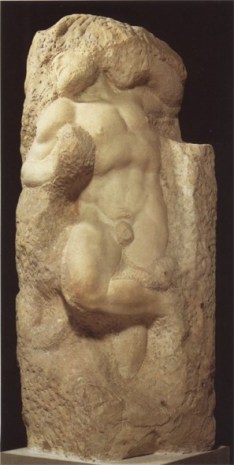





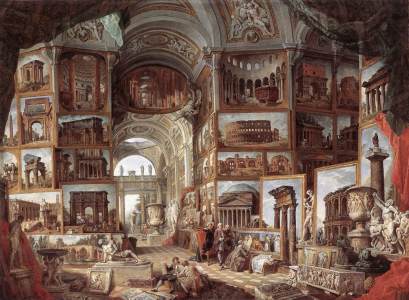
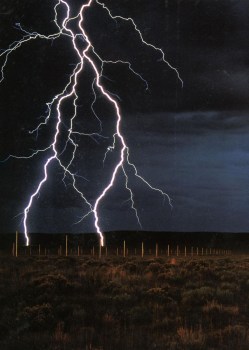



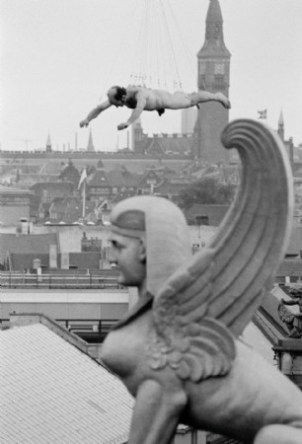
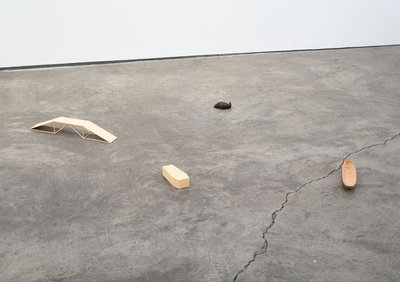


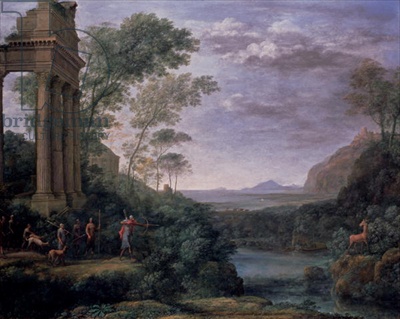








Thanks, by strange coincidence read Shelley’s poem to Mum at her request on our last phone call. D X
On Friday, October 4, 2019, anthonyhowelljournal wrote:
> anthonyhowelljournal posted: “This is in essence an amalgam of two of my > essays in Art and its Dark Side: the eight rivers of art. Grandeur versus > the Sublime I met a traveller from an antique land Who said: “Two vast and > trunkless legs of stone Stand in the desert. Near them ” >
LikeLiked by 1 person